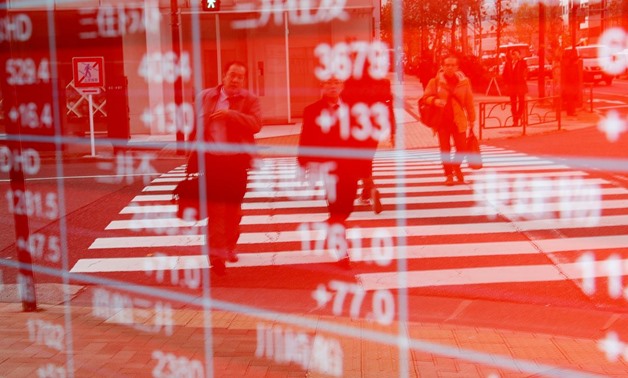Asia stocks slip, oil near six-month peak as U.S. prepares to tighten Iran sanctions

[ad_1]
Brent and U.S. crude futures surged to nearly six-month highs on news reports that U.S. Secretary of State Mike Pompeo will announce “that as of May 2, the State Department will no longer grant sanctions waivers to any country that is currently importing Iranian crude or condensate.”
The potential disruption to Iranian supplies are expected to add to an already tight oil market.
“The U.S. chief Iran hawks indeed have the President’s ear as (Secretary of State) Pompeo and (National Security Advisor) Bolton are singularly focused on bringing Iran’s economy to its knees,” said Stephen Innes, head of trading at SPI Asset Management.
“Predictably oil prices are rising,” he said.
Following the Good Friday holiday, markets in Britain, Germany and France will remain closed for Easter Monday, while those in the United States will reopen.
The S&P 500 e-minis were down 0.19 percent.
Asian equities dipped after Chinese stocks retreated from a 13-month high as comments from top policymaking bodies raised investor fears that Beijing will slow the pace of policy easing after some signs of stabilization in the world’s second-largest economy. [.SS]
MSCI’s broadest index of Asia-Pacific shares outside Japan lost 0.3 percent, edging away from a nine-month peak scaled last week after Chinese economic data beat expectations and eased concerns about the health of the world economy.
The Shanghai Composite Index was down 1.3 percent, South Korea’s KOSPI edged down 0.2 percent and Japan’s Nikkei was little changed.
In currencies, the dollar index against a basket of six major currencies was a touch lower at 97.391.
The index was still within touching distance of a 1-1/2-month peak reached on Thursday after steady U.S. retail sales data.
The euro was little changed at $1.1239, having taken a hit late last week after purchasing managers’ index (PMI) releases showed weak manufacturing activity in Europe.
The dollar was steady at 111.925 yen.
The Australian dollar, sensitive to shifts in risk sentiment, inched down 0.25 percent to $0.7137.
The Canadian dollar, on the other hand, added 0.25 percent to C$1.3363 thanks to a bounce in crude oil prices.
Brent crude futures were up 2.5 percent at $73.76 per barrel after brushing $74.31, the highest since Nov. 1, 2018.
U.S. crude futures climbed to $65.87 per barrel, highest since Oct. 31, 2018.
The U.S. reimposed sanctions in November on exports of Iranian oil after President Donald Trump unilaterally pulled out of a 2015 nuclear accord between Iran and six world powers. Washington is pressuring Iran to curtail its nuclear program and stop backing militant proxies across the Middle East.
Crude extended gains from last week, when a drop in crude exports from OPEC’s de facto leader, Saudi Arabia, and a draw in U.S. drilling rigs and oil inventories supported prices. [O/R]
Spot gold was up 0.26 percent at $1,278.11 an ounce, bouncing from $1,270.63 in the previous session – its lowest since Dec. 27, 2018. Gold is positively correlated to oil as the metal is often seen as a hedge against oil-led inflation. [GOL/]
Source link





